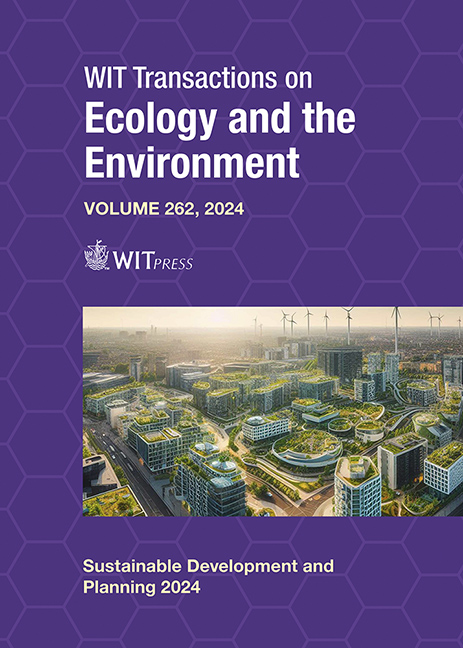STEP-BY-STEP METHOD FOR DISTRICT RENOVATION THROUGH COMMUNITY ENGAGEMENT AND URBAN PLANNING TO FOSTER LOCAL ECONOMIC DEVELOPMENT AND IMPROVE THE QUALITY OF LIFE
Price
Free (open access)
Transaction
Volume
262
Pages
13
Page Range
229 - 241
Published
2024
Paper DOI
10.2495/SDP240191
Copyright
Author(s)
OLATZ NICOLAS BUXENS, SILVIA URRA-URIARTE, AMAIA SOPELANA, ITSASO GONZALEZ OCHOANTESANA, IDOIA LANDA OREGI
Abstract
Reaching environmental targets set by the European Union (EU) requires, among other intervention areas, the energy renovation of the existing building stock. Current studies show that the renovation rate is more than two times less than what is necessary to reach the targets. Most implemented renovations across the EU reach just a small amount of energy savings. At the same time, their built environment presents habitability and accessibility problems which require regeneration processes at the district scale. In any case, the renovation rates are low to reach EU targets and milestones for 2030, 2040 and 2050. Therefore, an integral renovation process supporting district-level approaches to renovation could help if it addresses the quality of the urban space, the urban accessibility, and the social and economic challenges. Moreover, such processes need to be carried out through a participatory approach to cultivate active engagement and collaboration among community members, thereby enhancing the sustainability of renovation initiatives. This paper proposes an integrated renovation methodology for guaranteeing and fostering an integral renovation approach by providing decision-makers and stakeholders with sound support concerning the identification, selection and prioritisation of the renovation initiatives. The proposed methodology is rooted in well-established step-based methods which contemplate human-centred approaches to technology development with social innovation guaranteeing citizens’ participation and engagement. The methodology is demonstrated using a case study in Spain. The main outcomes demonstrate that the characterisation of both the buildings of the neighbourhood (and its physical diagnosis) and the neighbour’s profile allows for effectively anticipating the needs of the residents concerning the neighbourhood and buildings. The ultimate purpose is to provide recommendations and lessons learned for its replicability in neighbourhoods with similar characteristics since the method paves a promising basis for assessing district-scale energy renovation alternatives.
Keywords
renovation, integral, community, local economic development, social, co-governance





